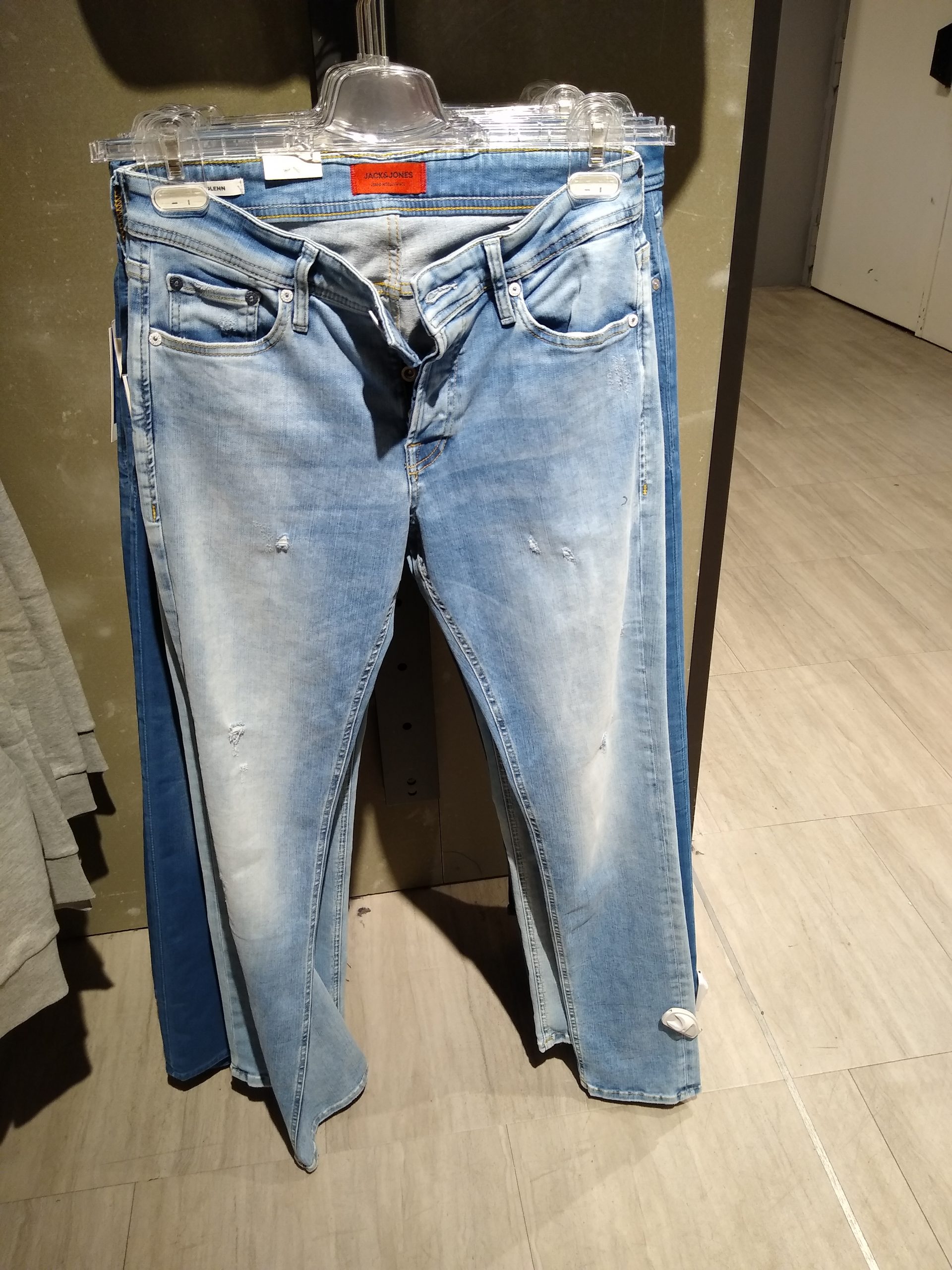3.8: 3.6-
- Page ID
- 82703
Einheit 3.6 (online)
 |
 |
 |
![]() Übung 1
Übung 1
The original version of this chapter contained H5P content. You may want to remove or replace this element.
![]() Grammatik
Grammatik
Adjective Endings in Nominative
Adjectives take an ending when they come directly before the noun they describe. The adjective endings vary depending on the gender, number, and case of the noun which they describe.
In the nominative case, if the adjective is preceded by a der-word (e.g., definite article), the ending for masculine, feminine, and neuter is -e, and the ending for plural is -en.
| masculine | feminine | neuter | plural |
| der rote Rock | die weiße Bluse | das blaue Hemd | die schwarzen Schuhe |
In the nominative case, if the adjective is preceded by an ein-word (e.g., indefinite article, “kein”, or any possessive adjective mein, dein, sein/ihr/sein, unser, euer, ihr/Ihr), the adjective takes the ending of the definite article.
| masculine | feminine | neuter | plural |
| ein roter Rock | eine weiße Bluse | ein blaues Hemd | keine schwarzen Schuhe |
Please note that the adjective ending will apply to all adjectives preceding the noun. For example:
Der lange rote Rock ist neu.
Das ist ein schönes blaues Kleid.
Die neuen warmen schwarzen Stiefel sind teuer.
*ACHTUNG* The colours “rosa” and “lila” don’t take any adjective endings in the nominative (e.g., der rosa Rock, die lila Bluse, etc.)
![]() Übung 2
Übung 2
The original version of this chapter contained H5P content. You may want to remove or replace this element.
![]() Grammatik
Grammatik
“dieser”/”jeder”/”welcher”
The words “dies-“ (this), “jed-“ (every, each), and “welch-“ (which) take the same endings as the definite articles. Look at the following examples:
Dieser Pullover ist sehr schön.
Diese Bluse ist zu klein.
Dieses Kleid ist hässlich.
Diese Socken sind schmutzig.
Nominative case:
| masculine (der) | feminine (die) | neuter (das) | plural (die) |
|
dieser Pullover jeder Pullover welcher Pullover? |
diese Bluse jedeBluse welche Bluse? |
dieses Kleid jedes Kleid welches Kleid? |
diese Socken welche Socken? |
Accordingly, when you use one of these words together with an adjective, the adjective endings are the same as in the table above when they are used with definite articles.
Dieser schöne blaue Pullover ist neu.
Welche rote Bluse ist teurer?
Jedes karierte Hemd ist altmodisch.
Welche alten Socken haben Löcher?
![]() Übung 3
Übung 3
The original version of this chapter contained H5P content. You may want to remove or replace this element.
![]() Was wissen Sie jetzt? Klicken Sie hier für Quiz 3.6.
Was wissen Sie jetzt? Klicken Sie hier für Quiz 3.6.
Media Attributions
- Rollkragen-Pullover © ckost is licensed under a CC BY-NC-SA (Attribution NonCommercial ShareAlike) license
- Lederjacke © ckost is licensed under a CC BY-NC-SA (Attribution NonCommercial ShareAlike) license
- Jeans © ckost is licensed under a CC BY-NC-SA (Attribution NonCommercial ShareAlike) license
- star © IO-Images is licensed under a Public Domain license
- light-bulb © IO-Images is licensed under a Public Domain license
- link © IO-Images is licensed under a Public Domain license
- check mark © janjf93 adapted by Solomon Hajramezan is licensed under a Public Domain license


